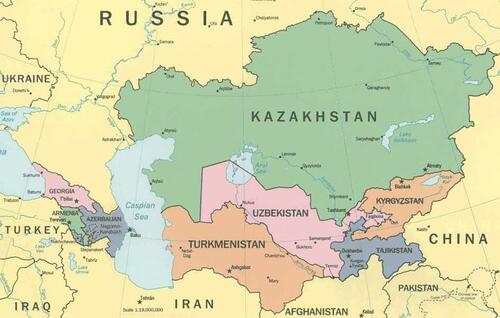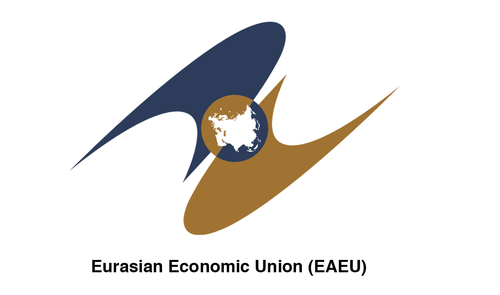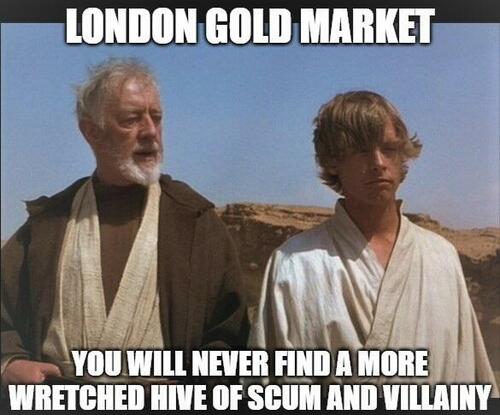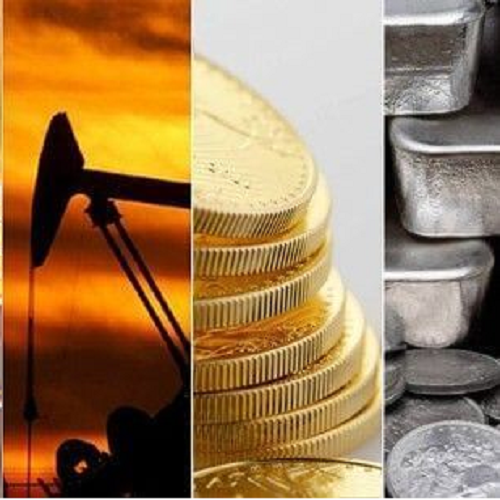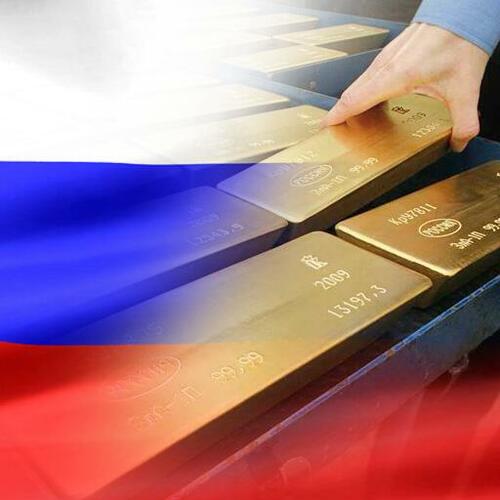Eurasian Alliance Plans A Moscow World Standard To Destroy LBMA’s Monopoly In Precious Metals Pricing
Submitted by Ronan Manly, BullionStar.com
Towards the end of July, news emerged in the Russian media that Moscow and a number of its Eurasian allies are now reviewing a proposal to create an entirely new trading and pricing infrastructure for the international precious metals in order to both destroy London and New York’s monopoly over global precious metals pricing, and to stabilize the Russian gold market.
This infrastructure would take the form of:
- a Moscow World Standard (MWS) for precious metals trading, akin to the London Good Delivery List of the London Bullion Market Association (LBMA)
- a new international precious metals exchange (trading venue) headquartered in Moscow based on the MWS, and known as the Moscow International Precious Metals Exchange
- a Price Fixing Committee, with price discovery and new precious metals price fixings based on the MWS, and reference prices derived in the national currencies of participant countries or in new international settlement units
This article will review these developments, explain who has proposed them, explore the potentially wide range of countries that could participate in such a system, and look at the originators’ thinking on what gold and other precious metals pricing should be based on.
The reported sources discussing this new precious metals ‘proposal’ information primarily come from 3 Russian news sites, namely Prime (part of media group RIA Novosti), RBC business daily (part of RBC media group), and URA news (a Yekaterinburg based news site). All of the sources have been translated from Russian into English.
Russian Finance Ministry to Market Participants
Early on 28 July, in an article titled “The Ministry of Finance of Russia proposes to create the Moscow Standard for Precious Metals”, business news site Prime (RIA Novosti) stated that based on a letter sent from the Russian finance ministry to financial industry participants and seen by RIA Novosti:
“The Ministry of Finance of the Russian Federation proposes to create a new international standard for the precious metals market – Moscow World Standard (MWS) – to normalize the functioning of the precious metals industry.”
Later that same day, in an article titled “The Ministry of Finance explained the idea to create a new standard for the precious metals market”, RBC news site said that:
“The Ministry of Finance did not come up with a proposal to create a new international standard for the precious metals market, the ministry’s press service said.”
“’As a regulator of the industry, the Ministry of Finance redirected the proposal received by it to market participants to evaluate it and provide a position on the advisability of its implementation,’ the press service said.”
So according to RBC, the Russian finance ministry did not propose the World Moscow Standard and the precious metals exchange idea, but merely forwarded it to industry participants in the Russian financial markets.
Then the question arises, who did create the proposal? For the answer, we turn to news site URA.
Eurasian Economic Commission (EEC)
On 29 July in an article titled “The Ministry of Finance of the Russian Federation launched a discussion on the reform of the world gold market”, news site URA said that:
“The discussion on the new gold standard was initiated by the Eurasian Economic Commission (EEC), the regulatory body of the Eurasian Economic Union (EAEU), the EEC press service told URA.RU on July 29.”
Note, the Member-States of the Eurasian Economic Union (EAEU) are the Republic of Armenia, the Republic of Belarus, the Republic of Kazakhstan, the Kyrgyz Republic and the Russian Federation. The Eurasian Economic Union (EAEU) website in English can be seen here.
The Eurasian Economic Commission (EEC) website in English can be seen here.
URA continues:
“According to a EEC spokesman – ‘On July 11, Sergey Glazyev, Minister for Integration and Macroeconomics of the Eurasian Economic Commission, held a meeting to discuss a proposal to create an international standard for the precious metals market as an alternative to the London Bullion Market Association (LBMA) and infrastructure for the circulation of tokenized gold and precious metals.
The meeting with Glazyev was attended by experts from the ministries of finance and central banks, national exchanges, producers of precious metals, as well as other interested organizations of the EAEU states.
This is a pretty incredible and high level list of entities who attended the meeting with Sergey Glazyev and would be expected to send shockwaves through the Western central banks and their bullion bank counterparts.
URA continues:
The participants exchanged views, and following the meeting, the EEC sent letters to the governments of the parties with a request to form a position on this issue.’”
So now it becomes clearer. Following the 11 July meeting, the Russian Ministry of Finance (in theory anyway) received the new precious metals infrastructure proposal in a letter from the Eurasian Economic Commission (EEC), and then subsequently sent out its own letter to relevant participants in the Russian financial sector.
According to URA, the Russian Ministry of Finance “as regulator of the industry” “redirected the proposal received by it to market participants to evaluate it and provide a position on the feasibility of its implementation”, and sent out its letter 2 weeks after 11 July:
“Two weeks later, the Ministry of Finance organized a discussion between the Russian authorities and market participants on the creation of a new international industry standard by sending out letters.”
This is why the first Russian media reports only picked up the new in the week beginning 25 July. Russian news site Pravda adds some color. In an article dated 6 August, Pravda states that:
“In fact, the idea was proposed not by the Ministry of Finance in the person of Anton Siluanov, but by the Eurasian Economic Commission and its minister Sergei Glazyev.
On July 11, Glazyev held a meeting where this proposal was first discussed in a wide circle, after which it was drawn up in letters and sent to the national governments of various countries, including the Ministry of Finance, which in Russia acts as a regulator of the precious metals trade industry.”
Before looking at who is Sergey Glazyev (Сергей Глазьев in Russian), lets look at what the actual letter from the Russian Finance Ministry to Russia’s financial industry participants actually contained.
The Min Fin letter – MWS and An Exchange
The actual letter from the Russian Ministry of Finance (Min Fin) to Russian financial market participants is not (as far as I can see) available anywhere on the web. I asked Russia’s National Financial Association (SRO NFA), the representative body of the Russian financial sector and precious metals sector, if they could send me a copy, but they didn’t respond.
I also asked the press office of the Eurasian Economic Commission (EEC) for documents and information on the Moscow World Standard proposal, but they didn’t respond.
Therefore, the content of the letter from the Russian Min Fin to Russia’s financial sector participants has to be pieced together using Russian media news sources.
A Moscow World Standard (MWS)
Prime (RIA Novosti) and RBC say that the Russian Ministry of Finance letter proposes the creation of “a new international standard for the precious metals market – Moscow World Standard (MMC) – Moscow World Standard (MWS). MMC is the Russian version = Московский мировой стандарт
Given that as part of Western sanctions against Russia, the London Bullion Market Association (LBMA) ejected all of Russia’s Good Delivery gold and silver refineries from the LBMA Good Delivery List on 7 March 2022 (the 6 refineries namely Krastsvetmet, Novosibirsk, Uralelectromed, Prioksky, Shyolkovsky, and Moscow Special Alloys Processing Plant), then this new proposed Moscow World Standard (MWS) looks like a replacement for and new competition to the LBMA Good Delivery List.
Note that the CME (COMEX) also removed all of the same 6 Russian refiners from the COMEX gold and silver approved brands lists on 7 March 2022.
See BullionStar article “US tees up ‘Stop Russian Gold Act’, triggering LBMA and COMEX to eject Russian refiners” for full details of the LBMA / COMEX removal of the Russian refiners.
Note that the LBMA also removed 3 Russian banks from the LBMA membership list in late February 2022, namely, VTB, Otkritie and Sovcombank. See here for details. Also note that in early April 2022, the LBMA’s sister organisation, the London Platinum and Palladium Market (LPPM) removed two Russian refiners from its LPPM Good Delivery List, namely Krastsvetmet and Prioksky.
A Moscow International Precious Metals Exchange
Given the proposed Moscow World Standard (MWS), RBC says that “the basis of the new structure may be a specialized international precious metals exchange headquartered in Moscow (MBDM).”
Note, in Russian, MBDM = МБДМ = международную биржу драгоценных металлов Москве (МБДМ) = Moscow International Precious Metals Exchange
Prime (RIA Novosti) and URA both say that the Russian Ministry of Finance letter states that:
“In order to normalize the functioning of the precious metals industry, it is critical to create an independent international infrastructure that is alternative in its functions to the LBMA.
It is proposed to base the proposed structure on a specialized international precious metals exchange headquartered in Moscow (MBDM), using the new international standard MWS”
URA refers to the existing global status quo on gold price discovery which the new Russian exchange and new Moscow World Standard aim to be an alternative to:
“The Ministry of Finance of the Russian Federation launched a discussion on the reform of the international gold market, which is now controlled by the US and the UK.
To this end, the Russian authorities are discussing the creation of an international precious metals exchange headquartered in Moscow and a new market standard – the Moscow World Standard (MWS) as an alternative to the generally recognized London Standard (LBMA).
If the initiative is implemented, the Russian Federation will be able to bypass Western sanctions on the sale of its gold abroad.”

Price Discovery / Pricing Mechanism – Independent of LBMA / COMEX
According to Prime (RIA Novosti) and RBC, the Russian Min Fin letter says that:
“As part of the work of the exchange, it is proposed to create a Price Fixing Committee, which will include the Central Banks of the EAEU member countries and their largest banks operating in the precious metals market, subject to the application of the MWS standard.”
Price Fixing here refers to daily reference or benchmark prices. The five central banks of the EAEU countries are the Bank of Russia, National Bank of Kazakhstan, National Bank of Belarus, National Bank of the Kyrgyz Republic, and the Central Bank of Armenia.
The “largest banks operating in the precious metals market” for each country would refer to commercial banks in each respective market that are involved in the precious metals market, e.g. for Russia it would be banks such as VTB, Bank Otkritie, Sovcombank, Sberbank, and Gazprombank.
Regarding fixing or reference prices, Prime (RIA Novosti) and URA also say that the Russian Min Fin letter says that:
“the bet should be placed on fixing prices in the national currencies of the key participating countries, or on new units of international settlements, such as the new unit of settlements proposed by the President of Russia within the member countries of the BRICS organization.”
URA links the above text on a new BRICS settlement unit to a URA article from 22 June 2022 titled “Putin is preparing a replacement for the dollar” which states that:
“The Russian financial messaging system is open to connecting banks from the five [BRICS] countries. The geography of use of the Russian payment system “Mir” is being expanded. The issue of creating an international reserve currency based on a basket of currencies of our countries is being worked out,” Vladimir Putin said.
Note that while the BRICS group currently consists of the five countries of Brazil, Russia, India, China and South Africa, two other countries, namely both Argentina and Iran, recently expressed an interest in joining BRICS.
All of this is huge news. The EAEU countries aim to develop precious metals pricing mechanisms independent of the LBMA and COMEX, as well as independent of the LBMA and LPPM fixings such as the daily LBMA Gold Price auctions, and daily LBMA Silver Price auction, and the daily LPPM Platinum Price and Palladium Price auctions.
Everyone Invited – Coalition of the Willing
Beyond the EAEU countries of Russia, Belarus, Armenia, Kazakhstan, and Kyrgyzstan, the Prime (RIA Novosti) news agency states that the Russian Min Fin letter is envisioning an even wider participation within the proposed new system:
“It is necessary to make membership in this organization attractive to all, without exception, foreign participants in the precious metals market, especially China, India, Venezuela, Peru, and other countries of South America and Africa, according to the Ministry of Finance.”
Throughout the Russian media coverage of the Min Fin letter to Russian financial sector participants, they stress the objective of the new system is in ending the LBMA / COMEX dominance of precious metals price discovery.
Russia’s Objective – To Destroy the LBMA monopoly
URA says that “the reform of the world gold market” is “proposed to deprive London and New York of the monopoly” RBC says that “The Ministry of Finance believes that the creation of a new structure:
- can destroy the LBMA monopoly,
- create a powerful international association of participants in the precious metals industry,
- and ensure the stable development of the industry both in Russia and around the world.
In fact, all three news sources use the word ‘destroy’ in relation to the LBMA monopoly on precious metals pricing:
- RBC – “The Ministry of Finance believes that the creation of a new structure can destroy the LBMA monopoly”
- Prime – “The creation of such a structure will be able to destroy the LBMA monopoly in the shortest possible time”
- URA – “The creation of a new gold standard in the future is capable of destroying London’s monopoly on pricing in the precious metals market.”
While the LBMA, LPPM and COMEX ejecting Russian refiners from the ‘good delivery’ and ‘approved refiners’ lists can conveniently be used as a catalyst for explaining this new ‘proposal’ from the Eurasian Economic Commission (EEC) to create a Moscow World Standard and a Moscow based precious metals exchange, if you look at the thinking of Sergei Glazyez, this proposal has probably been planned and researched well in advance and has been sitting on a shelf waiting to be implemented at the correct time.
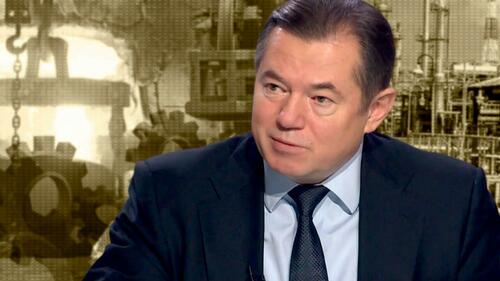
Eurasian Economic Commissioner
So who is this Sergei Glazyev, who through the Eurasian Economic Commission (EEC), is leading the proposal to create an entirely new, Russian led, trading and pricing structure for the global precious metals markets?
Currently, Glazyev, who was born in the Ukraine to a Russian father and Ukrainian mother, is a Russian politician and one of Russia’s leading economists, and is on the Board of the EEC as Commissioner for Integration and Macroeconomics. His EEC bio/profile can be seen here.
During his career, Glazyev has been, among other things, a deputy in the State Duma, the minister of Foreign Economic Relations of the Russian Federation, advisor to the President of the Russian Federation (2012 – 2019), a candidate for the Russian Presidency, and is also a university professor of economics, and a full member of the Russian Academy of Sciences.
In April 2022, Glazyez gave an interesting interview to Pepe Escobar about his views on a new global financial system, and why in his opinion, the US dollar dominated system is destined to fail. As regards the EEC / EAEU ‘proposal’, a number of points stand out.
- Glazyez refers to preparatory work he and colleagues have done on “a new synthetic trading currency based on an index of currencies of participating countries” to which “around twenty exchange-traded commodities can be added“. Upon this, a monetary unit can be based.
- Glazyez says that “after Russia’s reserves in dollars, euro, pound, and yen were ‘frozen,’ it is unlikely that any sovereign country will continue accumulating reserves in these currencies. Their immediate replacement is national currencies and gold.”
- The phase of price formation “driven by prices at various exchanges, denominated in dollars” is nearly over, says Glazyez. Price formation will now move to national currencies.
- Following that, the “final stage on the new economic order transition will involve a creation of a new digital payment currency founded through an international agreement based on principles of transparency, fairness, goodwill, and efficiency.” Glazyez expects “that the model of such a monetary unit that we developed will play its role at this stage.“
- “A currency like this can be issued by a pool of currency reserves of BRICS countries“, and “the basket could contain an index of prices of main exchange-traded commodities: gold and other precious metals, key industrial metals, hydrocarbons, grains, sugar, as well as water and other natural resources“.
- “an independent system of international settlements in the EAEU, SCO and BRICS, which could eliminate critical dependence of the U.S.-controlled SWIFT system.“
Another Sergei
This currency device representing a basket of currencies and commodities is something which another Sergei, namely Sergei Silvestrov of the Russian Security Council’s scientific council, talked about in a 4 July 2022 article by URA. Silvestrov says that the Russians have worked on an algorithm which values a range of commodities in terms of gold, and adds commodities to a basket of gold and currencies to produce an intrinsic value for a means of payment. This algorithm is called ‘settlement gold’.
Silvestrov says that:
“As a result, the Russian ruble and monetization will not be determined by the balance of supply and demand against Reserve currencies. And not by just gold either, but by a wide range of commodity and currency values produced by domestic producers.
It is worth noting that 40% of these valuables are produced in the Russian Federation, 60% in the EAEU countries and 80% in the BRICS countries. Just in those very countries, some of which are now under sanctions pressure, the ultimate goal of which is to establish control over resources.”
The URA reporter asks “How actively is this topic being discussed in the government?“, to which Siilvestrov replies:
“Serious preparatory work is underway, and many departments have practical interest in it. Interest in this topic is shown by the expert community of the Eurasian Union and BRICS . The results of this work can form the basis for the introduction of an international unit of account within the framework of the Eurasian Economic Union.”
Glazyev Comments Again
In an even more recent interview on 24 August with Russian-language business daily newspaper Vedomosti, Sergey Glazyev refers to the proposed Moscow Gold Standard Eurasian Standard, and the need for Russia to continue to buy gold:
“now it is necessary to replenish [for ex reserves] primarily through the purchase of gold. The Central Bank needs to increase activity in this direction and bring the share of gold in the composition of gold reserves to 80%.
“In response to Vedomosti’s remark that the liquidity of Russian gold under the conditions of the West’s embargo on its purchases is in question, Glazyev announced the need to quote Russian gold on world markets. ‘This means that you need to introduce your own gold standard, which would be recognized at the international level, with a gold quotation on the Moscow Exchange and completely get rid of the London Exchange“
On a ‘Eurasian standard”, Glazyev says that:
“this Eurasian standard must first be agreed with our partners, for example, in the SCO.” Russian gold will be quite liquid on the Asian and global markets in general, regardless of the position of Western countries.
At the same time, we could introduce a new international payment and settlement instrument – a stablecoin pegged to gold – and offer it to all Asian countries.
In the future, other commodities produced in the SCO countries can be added to gold as collateral for the new world settlement currency.
Together with a pool of their foreign exchange reserves, this would become the basis for creating a very stable and reliable payment instrument, an alternative to the current ones.”
The reference by Glazyez here to ‘stablecoin’ resonates with the reference by the EEC spokesman to Glazyez’s 11 July meeting where they also discussed “infrastructure for the circulation of tokenized gold and precious metals.”
As a reminder, SCO refers to the “Shanghai Cooperation Organisation” whose members are China, India, Russia, Pakistan, Kazakhstan, Tajikistan, Kyrgyzstan and Uzbekistan. There are also 4 Observer States interested in attaining full membership (Afghanistan, Belarus, Iran, and Mongolia) and 6 Dialogue Partners (Armenia, Azerbaijan, Cambodia, Nepal, Sri Lanka and Turkey). Iran is in the process of moving to become a full SCO member, while Egypt, Qatar as well as Saudi Arabia are becoming dialogue partners. One of the SCO’s priorities is regional development.
Conclusion
As you dig deeper, what looked like a hastily put together Russian attempt to react against being kicked out of the LBMA, suddenly looks like a long term plan involving the EAEU, BRICs and the SCO. Following the European gas and electricity price spikes, is the Russian precious metals ban another case of Western countries shooting themselves in the foot?
Long before the 11 July meeting between EAEU central banks, national exchanges and precious metals participants, Sergei Glazyez was already calling for common exchange markets for goods including gold, as he said:
“In terms of pricing processes and currency infrastructure, we are over a barrel on Western systems. Today we should not only think about forming the exchange space, but also create our own pricing system in national currencies.“
As regards EAEU, BRICS and SCO, Russia was even calling for increased cooperation on 25 April:
“Russia is urging Eurasian Economic Union (EAEU), BRICS and Shanghai Cooperation Organization (SCO) countries to increase settlements in national currencies to increase independence in mutual trade.”
One could say that given that the Russian Federation is the largest and most influential member of the EAEU, and given that Sergey Glazyev is a Russian economist, then from Russia’s point of view, the “Moscow World Standard” and the ‘Moscow precious metals exchange” are Russian ideas which Russia has literally ‘proposed’ to itself. While this may be true, at the same time they have been proposed to the other EAEU members also, and if implemented will apply to the whole EAEU, and any other country in BRICS or the SCO that wants to join too.
But it’s probably the case that while the Russian Ministry of Finance was acting as a conduit in communicating the message of the EAEU to financial market participants in Russia, the Ministry of Finance was most likely involved in the formulation of the Glazyez plans all along.
The Russian Min Fin letter ends with a sense of urgency saying that the Western ban on Russian precious metals refiners “actually paralyzes their activities and is a critical negative factor that calls into question the very existence of the industry in Russia.
According to URA, the Eurasian Economic Commission (EEC) press service, in reference to feedback from the parties to the 11 July meeting said that “after the Commission receives the positions of the parties, a decision will be made on the advisability of continuing this work”.
While launching a Moscow World Standard and gold exchange will not reverse the ban on Russian gold sales entering London, Zurich and New York, it could, if it reaches critical mass, allow buyers of Russian gold to emerge across the rest of the world from countries which take part in the new system. And importantly, if a new Standard and Exchange becomes operational, Russian gold would not need to be sold at a discount.
But the real impact of the proposed new precious metals trading and pricing infrastructure, if it’s embraced by countries from the Eurasian Economic Union, from BRICS, and from the Shanghai Cooperation Organisation, is that it could lead to real precious metals price discovery and be “capable of destroying London’s monopoly” on pricing.
That could spell the end for the fractional reserve system of the LBMA and COMEX where unlimited synthetic cash-settled paper contracts determine international precious metals prices, while underpinning Sergey Glazyev’s international settlement unit of gold, currencies and commodities, if it ever takes shape.
The LBMA annual conference takes place this year in the middle of October in Lisbon. While the new Eurasian Economic Commission proposal for a Moscow World Standard is not on the official agenda, it will probably be one of the subjects most talked about by conference delegates during coffee breaks. That is of course unless the LBMA bans freedom of speech, like it banned the Russian refiners and banks.
This article was originally published on the BullionStar.com website under the same title “Eurasian alliance plans a Moscow World Standard to destroy LBMA’s monopoly in precious metals pricing“.
Tyler Durden
Sun, 09/04/2022 – 07:00
via ZeroHedge News https://ift.tt/IJnqd4T Tyler Durden
